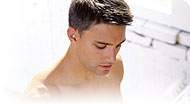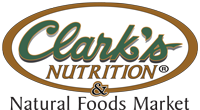Search Healthnotes
Prostatitis

About This Condition
Prostatitis is an inflammation of the prostate gland. It is a term that encompasses four disorders of the prostate: acute bacterial prostatitis, chronic bacterial prostatitis, chronic nonbacterial prostatitis, and prostadynia.
Chronic nonbacterial prostatitis (NBP), also called chronic abacterial prostatitis (CAP), is the most common form of prostatitis. NBP is usually caused by infectious agents such as fungi, mycoplasma, or viruses.1 Prostadynia (PD), also called chronic pelvic pain syndrome, is a noninfectious form of prostatitis. Although the cause is unknown, it has been proposed that PD may be a neuromuscular condition, causing pain of the pelvic floor muscles.2 Acute bacterial prostatitis (ABP) results from a urinary tract infection (usually from E. coli bacteria) that has spread to the prostate. Chronic bacterial prostatitis (CBP) is usually the result of a partial blockage of the male urinary tract, such as occurs with benign prostatic hyperplasia (BPH). Such blockages promote the harboring of bacteria from a previous infection and reduce circulation, thereby preventing both the body’s natural immune mechanisms and medication from getting to the site.
Symptoms
Men with prostatitis may have symptoms including pain or discomfort in the lower abdomen, testicles, and penis; discomfort during ejaculation or urination; or a weak urinary stream with dribbling. Advanced cases may also have fever, chills, frequent urge to urinate, burning urination, blood passed in the urine, and pain in the joints and muscles.
Healthy Lifestyle Tips
Urination and ejaculation may provide defense against prostatic infection by flushing the urethra. The prostate also secretes an antibacterial substance known as “prostatic antibacterial factor” into the seminal fluid (semen), which helps to fight infection.3 In one preliminary study, unmarried men with NBP who had avoided sexual activity for personal or religious reasons and who had not responded to medication, were encouraged to masturbate at least twice a week for six months. Out of 18 men, 78% experienced moderate to complete relief of symptoms.4
Use of tobacco, especially by smoking, reduces the zinc content of prostatic fluid, and may therefore reduce natural immunity to prostate infection.5 No research, however, has investigated the effect of smoking cessation on the prevention of prostatitis.
Holistic Options
Acupuncture may be helpful for chronic prostatitis according to one small, uncontrolled study.6 Seventeen patients with chronic prostatitis that was unresponsive to conventional therapy were treated with electroacupuncture (acupuncture with electrical stimulation). The effectiveness of electroacupuncture therapy was reported to be moderate in 70% and excellent in 30% of the patients treated.
Prostatic massage through the rectum was once a common treatment for CBP and NBP, and is still prescribed by some practitioners. Prostatic massage is thought to promote circulation and drainage of infected areas.7 While little scientific research has been done to evaluate the effectiveness of this treatment, some physicians and their patients have reported symptomatic improvement.8 Prostatic massage should be conducted only by a trained specialist. Prostatic massage should be avoided in ABP because it is painful and could spread the infection.9 Also avoid this therapy in the presence of prostatic calculi (stones), a condition common in elderly men in which small calcifications develop in the prostate.
Controlled studies indicate psychological factors, such as anxiety and depression, occur more frequently in men with NBP and PD.10, 11, 12 This may be because psychological factors contribute to the development of NBP and PD, or perhaps they occur as a result of prostatitis. Nonetheless, some practitioners believe psychotherapy may help reduce symptoms in these cases.13
Some researchers have reported that certain cases of chronic prostatitis are helped by biofeedback (using simple electronic devices to measure and report information about a person’s biological system) and other treatments aimed at reducing chronic pain.14 This suggests that some of the causes of PD, and possibly NBP, may be neuromuscular. In support of this idea, smooth muscle relaxing medications are reported to reduce symptoms in men with CBP, NBP, and PD, and to reduce the recurrence rate of CBP.15 However, no controlled research has explored the effectiveness of biofeedback or alternative neuromuscular therapies for prostatitis.
A sitz bath is the immersion of the pelvic region (up to the navel) in water. Sitz baths are reported to provide temporary relief of symptoms in men with chronic prostatitis, although no controlled research has evaluated these claims.16, 17 This therapy is not recommended in ABP, as it may worsen the infection.18 In chronic prostatitis, doctors of natural medicine recommend “contrast sitz baths,” a series of alternating hot and cold baths, requiring two tubs (or a bathtub and adequately sized basin), one for each temperature. The hot sitz bath is taken first with the water at a temperature of 105–115ºF for 3 minutes. This is immediately followed by the cold sitz bath at 55–85º F for 30 seconds. This process is repeated two more times, for a total of six baths (three hot and three cold) per treatment.19
Copyright © 2026 TraceGains, Inc. All rights reserved.
Learn more about TraceGains, the company.
The information presented by TraceGains is for informational purposes only. It is based on scientific studies (human, animal, or in vitro), clinical experience, or traditional usage as cited in each article. The results reported may not necessarily occur in all individuals. Self-treatment is not recommended for life-threatening conditions that require medical treatment under a doctor's care. For many of the conditions discussed, treatment with prescription or over the counter medication is also available. Consult your doctor, practitioner, and/or pharmacist for any health problem and before using any supplements or before making any changes in prescribed medications. Information expires December 2026.











